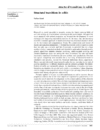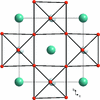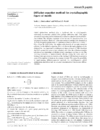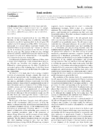issue contents
September 2010 issue

Cover illustration: A collage of related patterns that are formed via tilings of the hyperbolic plane. Two-dimensional `universal tilings' (e.g. UQC473) of hyperbolic space can be wrapped onto a three-periodic minimal surface (e.g. the gyroid), forming a curvilinear `Epinet tiling' (EGC473) whose edges relax to give a `Systre net', sqc14527. This approach to net enumeration is described in Ramsden et al. [Acta Cryst. (2009), A65, 81-108]. Further examples are collected at https://epinet.anu.edu.au.
structural transitions in solids

lead articles

research papers
short communications
book reviews



 journal menu
journal menu































